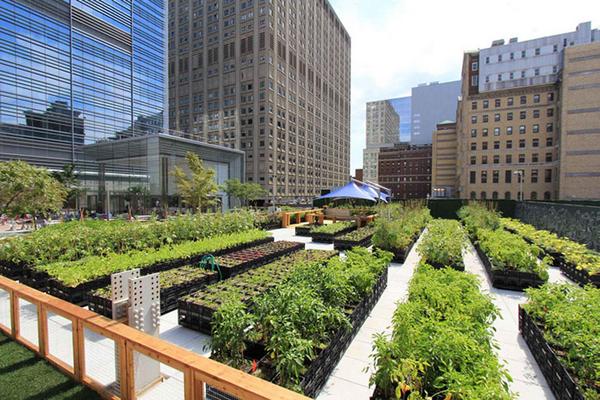How City Blooming can Save You Time, Stress, and Money.
How City Blooming can Save You Time, Stress, and Money.
Blog Article
City Blooming Can Be Fun For Everyone
Table of Contents7 Easy Facts About City Blooming ShownCity Blooming - The FactsThe 10-Second Trick For City BloomingThe 3-Minute Rule for City BloomingAll about City Blooming
Intrigued in growing food offer for sale in the City of Chicago? Thinking of starting a community garden? Modifications to the Chicago Zoning Ordinance enable farming usages like neighborhood yards and metropolitan farms in several components of the city. Below is a listing of frequently asked inquiries pertaining to the guidelines and laws that farmers ought to think about when intending a city farming job.
The zoning modification does not change any type of other codes handling composting, building licenses, buying or leasing City possessed home, business licenses or environmental contamination. There are existing codes that control these issues and they remain in complete effect and may be suitable to your project. Area yards are generally possessed or taken care of by public entities, civic companies or community-based companies and preserved by volunteers.
Urban ranches grow food that is intended to be offered, either on a not-for-profit or for-profit basis. Due to their commercial objective, urban ranches call for a business license.
What Does City Blooming Mean?
Composting is enabled however only for plant material that is created and used on website. The amount of garden compost product can not exceed 25 cubic yards at any offered time according to the criteria in 7-28-715 of the City's Municipal Code. Yes. Due to the fact that the soil at many new garden websites needs changing, garden compost, soil, wood chips, or various other products can be obtained to construct or enhance the expanding space - home and garden.

If a building permit is called for then the hoophouse will certainly be thought about an accessory building. You can learn even more regarding the building permit needs by getting in touch with the Division of Buildings. The 25,000-square-foot dimension limit is planned to stop a solitary neighborhood yard from dominating an offered block or interfering with the block's existing property or industrial personality.
The restriction does not apply to gardens found in Public Open Room (POS) districts. Can there be even more than one neighborhood garden that is 25,000 square feet on a single block? Fence is not required, however, yards that have huge car park areas may be called for to install fencing or other landscaping attributes.
City Blooming Can Be Fun For Everyone
B1 & B2 areas need that all business usage activities be performed indoors. Is fence required for metropolitan ranches? Fencings may be needed, along with landscaping and screening, for specific car parking locations and outside work or storage areas depending on place and the particular task taking location.
Yes. Urban farms need building authorizations and zoning authorizations prior to construction. Various other types of city review might be required depending upon certain structures, tasks, size, landscape design, licensing, public health and stormwater monitoring issues. Many of these needs are recognized in the project layout or allowing procedure, however, the candidate might be accountable to individually recognize specific licenses or allows that may be called for.
The Division of Service Affairs and Customer Protection can assist determine the details kind of business permit that's required. Off road vehicle parking is needed for most industrial tasks in Chicago. The needed number of vehicle parking rooms is based on the number of staff members working on site and not the square footage of the growing space.
The City Blooming PDFs

Yes. A metropolitan ranch can market garden compost material generated on site, nevertheless, the operation has to follow the guidelines in 7-28-715 of the Chicago Municipal Code. Yes. Aquaponic systems are enabled inside your home on urban ranches in many zoning districts. A zoning review and structure authorization is called for in order to set up structures or systems and a business license is called for as described above.
As much as five hives or colonies of honey might be kept as an accessory usage. However, beekeepers must sign up with the Illinois Department of Agriculture. For more details regarding the proposed zoning modification you might contact the Division of Real Estate and Economic Growth, Bureau of Planning and Zoning at 312.744.8563.
Farming in cities and metropolitan areas A metropolitan ranch in Chicago. Urban farming describes different methods of cultivating. https://www.anyflip.com/homepage/qktky, handling, and distributing food in metropolitan locations. The term additionally puts on the location activities of pet husbandry, aquaculture, beekeeping, and gardening in a city context. Urban farming is distinguished from peri-urban farming, which takes area in country areas at the side of residential areas.
City Blooming Can Be Fun For Everyone
, who look for to form social networks founded on a shared principles of nature and community holism. These networks can develop useful source by means of formal institutional assistance, ending up being incorporated right into local community preparation as a "transition town" activity for sustainable city advancement.
In either situation, the extra straight access to fresh veggie, fruit, and meat items that might be know via urban agriculture can enhance food security and food safety while reducing food miles, resulting in lower greenhouse gas discharges, therefore adding to climate modification mitigation. Some of the very first evidence of urban agriculture originates from Mesopotamia.
Report this page